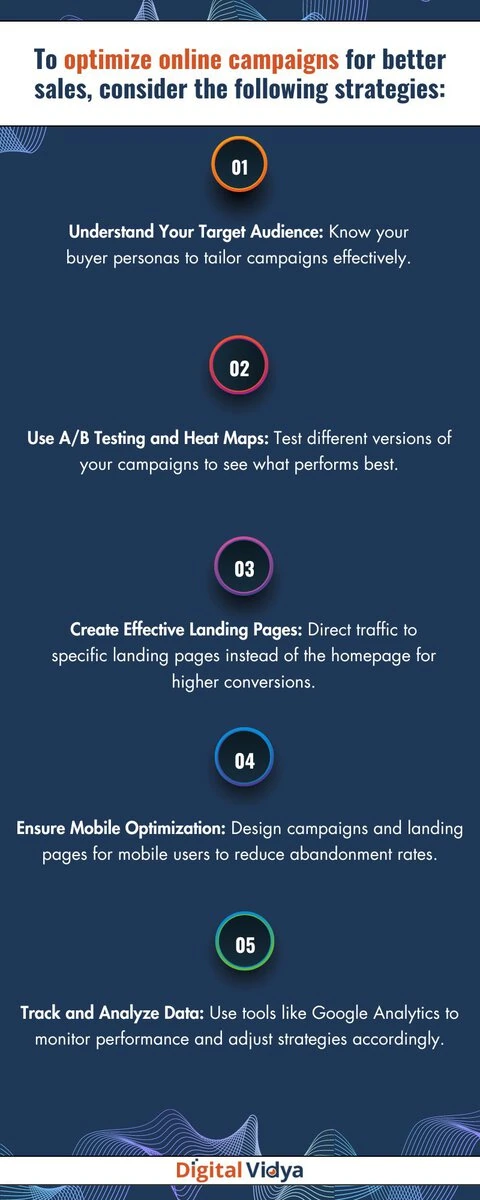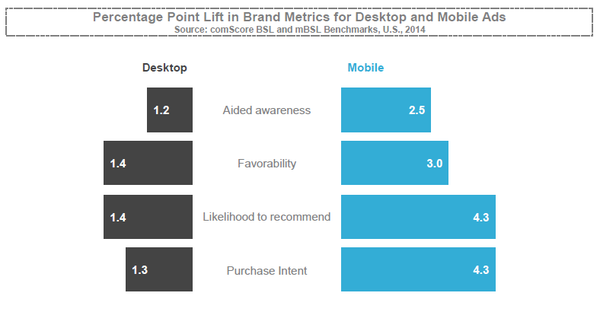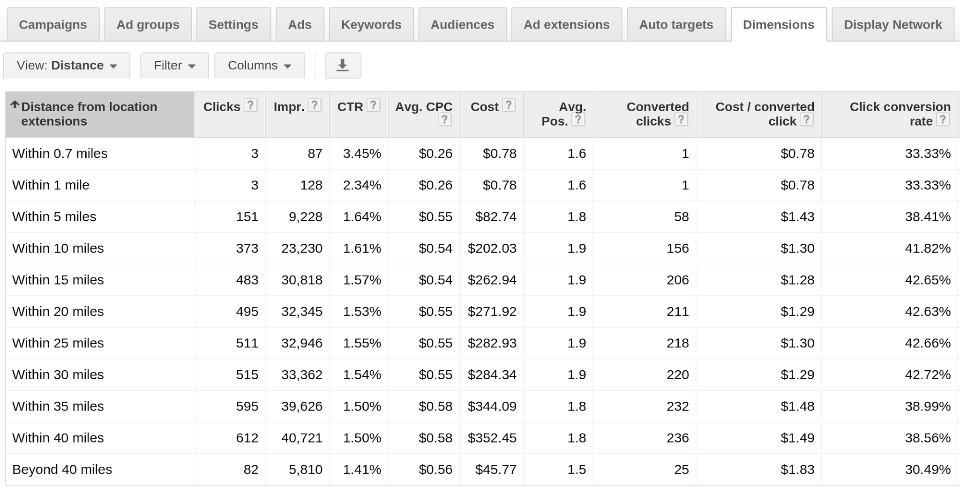Have you ever considered optimizing your campaigns for offline performance? How to optimize online campaigns for better offline sales, marketing, and conversions.
Online ads are great only when they improve the offline activities of offline sales and business functions. The integration of online and offline sales is the new revolution, and advantage of internet marketing.
In the online campaign management strategies for the offline sales process, we will learn how to optimize the offline value of online ads, optimize the impact of mobile ads, product to identify for specific locations, optimize the bidding of ads, mobile page optimization, and data analysis of online ads for offline sales. Take notes from case studies to optimize Online campaigns for better Offline Sales and marketing.
Note: You could contact your Google account representative and see if you are eligible for store visits conversion tracking in AdWords.
Offline Value of Online Ads
With the help of a simple formula, you can calculate the full offline value that your online ads are driving and thereby, estimate the values for each variable. Also, a person can use Store Sales which is another AdWords feature that enables you with this exercise.
You can contact your Google account representative to see if you are eligible for this feature. Offline customers are valuable sources for understanding the response to online ads. Evaluate, ask, and recognize from where or which ad they have seen before reaching out to the store.
Online campaign management are tricky task to optimize on a day-to-day basis. A paid online campaign is not automatically profitable until an ad manager is optimized for ROI. Let’s take a look at the online sales and campaign management steps to run a profitable campaign:

1. Determining the Impact of Mobile on Your Offline Sales
In order to use data for some real-time action, it is important to segment your store visits by device so that you can understand performance differences between mobile and desktop.
Why Separate Store Visits by Device?
Having segregated data means you will be in a better position to bid more for shoppers who are searching for you on mobile and are more likely to visit one of your physical locations to complete a purchase.

Today, more than half of your target audience are on mobile. That said, think how your ads on mobile are driving most of your store visits conversions.
These are shoppers are more likely to visit your physical locations out of convenience, therefore, make sure that your ads are visible to these mobile shoppers by increasing your mobile bid adjustments. This will account for the offline sales that are driven by mobile.
Important Note
In case you are managing multiple accounts, it is important to make sure that you can link your Google My Business account with each AdWords account. Thereby, you will need to do this in order to see store visits conversions in AdWords.
Also Read: How AdWords will Help you Drive Offline Sales
Don’t worry if you are not having store visits conversions reported in AdWords, you can always use the clicks on your location extensions to understand performance differences. Someone who is interested in reaching out to your location store, will probably click on the Get Directions link to find you.
Example: Total return on ad spend (ROAS) versus Online ROAS by device
|
Device |
Online ROAS |
Total ROAS |
|
Mobile |
1.3 For every $1 spent, you see $1.30 in return |
13.9 |
|
Tablets |
1.8 |
6.3 |
|
Computers |
2.1 |
9.8 |
In your account: You can increase mobile bid adjustments by almost 11x to account for the additional offline value.
On calculating the Return on Ad Spend (ROAS) for your campaigns, you need to look for any potential differences in average order value between your offline and online channels. You need to think about the types of products someone would prefer to evaluate and might purchase one from your stores.
Case Study on Hyundai Motor UK Ltd
The company, Hyundai Motor UK Ltd is the Subsidiary of Hyundai Motor Company which does after-sales services for new and used cars of Hyundai brand. There are 157 dealers across the UK.
The goal of the company was to engage an in-market car-buying audience with an objective to increase brand awareness and thereby lift consideration for the Hyundai brand. For the group of 157 dealers, they wanted the hard KPI to drive leads.
The Hyundai UK company implemented store visits in AdWords. They ran test on two branded keyword campaigns and the following were the results achieved by the company:
- Monthly website visits were 303,131
- Monthly visits to physical retail locations were 7,980
- About 3.4% of paid clicks and 4.9% of paid mobile clicks resulted in retailer visits.
- The company got a 1,737% return on ad spend.
This data proved search marketing investment for mobile was high.
2. Which Product Drives Offline Sales?
You have products, a lot of products. Some perform well while others don’t. It is important to understand which product categories are better at driving store conversions.
Why Understand Different Product Categories?
By understanding the product categories, you can maximize impression share for product categories that are delivering more offline value. You could organize your campaigns either by category or type. Then optimize your ad groups or campaigns that are driving with store visit conversions in mind:
- You need to ensure these products have enough budget.
- Increase the location or mobile bid adjustments for the selected products.
- Showcase these products and their promotional offers in sitelinks in order to drive more local interest.
- Also, more keywords will play the role. Add keywords for this category or you can use broader match types to discover keywords that are used by people to refer to these products.
Important Note
It is important to remember the value of your generic terms as customers might start their purchase journey by searching for more generic or short tail keywords and then going in on more specific product models and names. These keywords can play a key part in driving new customers into your stores.
Example: Store visit rate by product category
|
Campaign |
Store visit rate |
|
TVs |
15% |
|
Home appliances |
12% |
|
Cameras |
10% |
In your account: You can increase mobile bid adjustments for this campaign to account for additional offline value.
Case Study on Office Depot Inc.
The company, Office Depot, Inc. formed as part of the merger of office Depot and OfficeMax, turned to local inventory ads (LIA) in order to reach the omnichannel customers. The results provided a 3 times return on the digital marketing spend of the company, deeper consumer insights, and a better shopping experience.
With the help store visits reports and local inventory ads, the company learned which product categories were actually driving store foot traffic.
3. Why Set the Right Local Bid Adjustments?
It is important to separate your store visit conversions by distance to calculate your location bid adjustments.
Why Segment Store Visits Conversions by Distance?

By deciding on conversions by distance, you improve the chances that your ad will show to customers nearby who are more than likely to visit one of your physical locations after clicking on an ad.
This report could be referred to as a Distance Report for your location extensions. This report will give you click-through rate (CTR) by distance from your location extensions. By doing this, you will be able to approximate how offline performance can vary by distance from your physical business locations.
Use this report to help improve how you can reach folks who are searching for something you offer nearby:
- Set up levels of location bid adjustments based on how performance varies by different distances from your store, especially when compared to your account’s national or broader averages. Remember, these differences can also vary by product category. Someone looking for coffee may not be willing to travel as far as someone who’s shopping around for furniture.
- Expand your keyword list to include phrases like “near me” to connect with these shoppers.
If you observe that CTR varies by different distances from your locations, you can set more than one radius and have a different bid adjustment for each one.
Example:
|
Distance from location extensions |
CTR |
|
Within 1 mile |
4.0% |
|
Within 5 miles |
2.8% |
|
Within 10 miles |
2.0% |
|
National |
1.0% |
In your account: You can set a location bid adjustment that is 4 times higher than the account and then set different bid tiers for the different distances.
4. Optimize Ads For Mobile Pages
Close to 64% of ads are mobile ads according to Statista. More than INR: 24 Thousand Corore is spent on digital mobile ads worldwide. Optimizing online campaigns for mobile pages is a tactical and wise decision to improve conversion rate in offline sales. Most instant and quick feedback comes from mobile users.
5. Track and Analyse Data
Without understanding the ads’ performance no paid ad campaign is possible. Learn to capture and strategize the performance from several KPIs with every piece of new information.
- Check which ad copy are working in which location
- Tests similar ads
- Takes notes from impression, CTR, conversions
- Asks offline customer how they found their product or services
- Re-adjust the copy, budget and test it again
Sales is effective in the presence of prominent lead generation. Discover and apply our lead generation tips for better sales flow online.
These fresh tips will help you in optimizing online campaigns to generate more offline leads. How are you thinking to integrate your online campaigns with offline performance?
Image Credits: smallbiztrends, amazonnews








